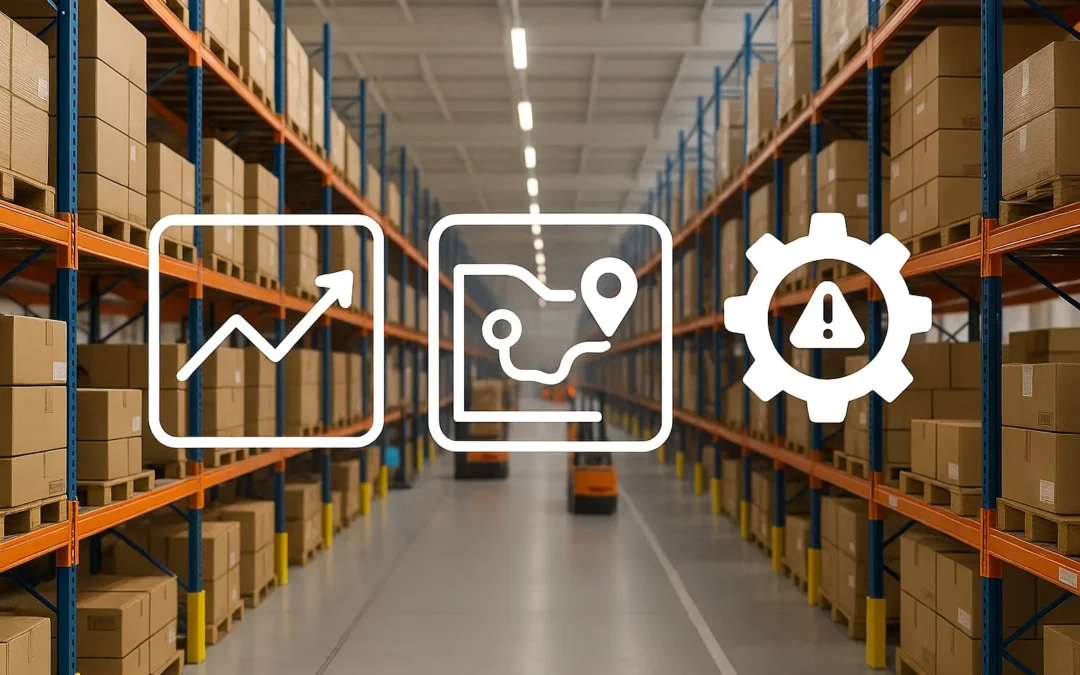In a global business environment where volatility is the new normal, supply chain efficiency is no longer a competitive edge; it’s a core pillar of survival and profitability. For managers, the constant challenge is to cut costs without compromising speed or customer satisfaction. The question is no longer if technology can help, but how to implement it effectively. The strategic answer is Artificial Intelligenc.
Far from being an abstract concept reserved for tech giants, AI offers practical, accessible tools that are already making a measurable impact on the bottom line of medium and large enterprises. Here, we explore three key areas where AI doesn’t just optimize but revolutionizes cost management.
Demand Forecasting: From Estimation to Scientific Precision
Inventory balance is a delicate art. Excess stock ties up valuable capital and drives up warehousing costs, while stockouts lead to lost sales and damage brand reputation. Traditional methods often fall short. AI, through machine learning models, analyses vast datasets: historical sales, seasonality, macroeconomic trends, consumer behaviour, and even external variables like weather events or competitor marketing campaigns, to predict future demand with astonishing accuracy.
Concrete Savings: By aligning inventory with actual demand, you drastically reduce stock holding costs and losses from obsolete products. The freed-up capital can be reinvested into business growth areas.
Route Optimization: Smart and Dynamic Logistics
Transportation costs are one of the most significant line items in any logistics operation. AI transforms route planning from a static exercise into a dynamic, real-time process. Algorithms calculate not just the shortest route, but the most efficient one, considering dozens of variables simultaneously: current traffic, weather conditions, priority delivery windows, vehicle-specific fuel consumption, and even the probability of delays in certain areas. If an accident or road closure occurs, the system can instantly recalculate and reroute the fleet.
- Concrete Savings: The reduction in fuel consumption is immediate. This is compounded by lower maintenance costs from vehicle wear and tear and optimized driver hours. Furthermore, delivery reliability improves, a key factor in customer retention.
Predictive Maintenance: Goodbye to Unplanned Downtime
An unexpected breakdown of a critical machine, be it a forklift in the warehouse or a conveyor belt on the production line, can cause a domino effect, halting operations and generating exorbitant costs. Predictive maintenance, powered by AI and the Internet of Things sensors, shifts the paradigm from reactive to proactive. These systems continuously monitor equipment performance, analysing vibrations, temperatures, and other indicators to detect anomalies imperceptible to humans. This allows you to identify a potential failure week or even months before it occurs.
- Concrete Savings: Costly unplanned downtime and emergency repairs are eliminated. The lifespan of assets is maximized, and spare parts inventory is optimized, moving you from a “fire-fighting” model to strategic, planned resource management.
In summary, implementing AI is not about a futuristic tech overhaul but a strategic and profitable business decision. By integrating these tools, you don’t replace your team; you empower them, giving them the ability to make data-driven decisions that drive profitability.
Interested in cutting operational costs and strengthening your resilience? Send me a direct message to discuss where AI could drive the biggest savings for your business.

